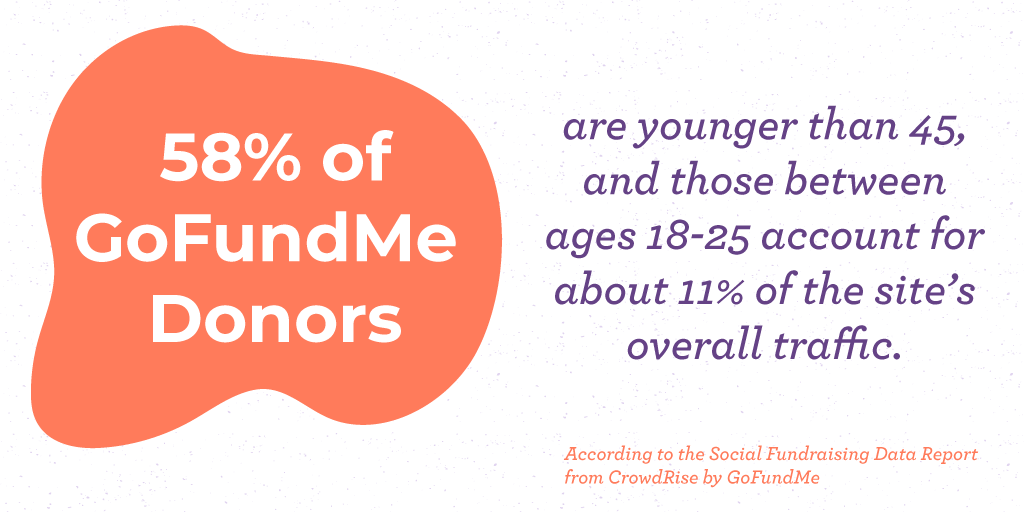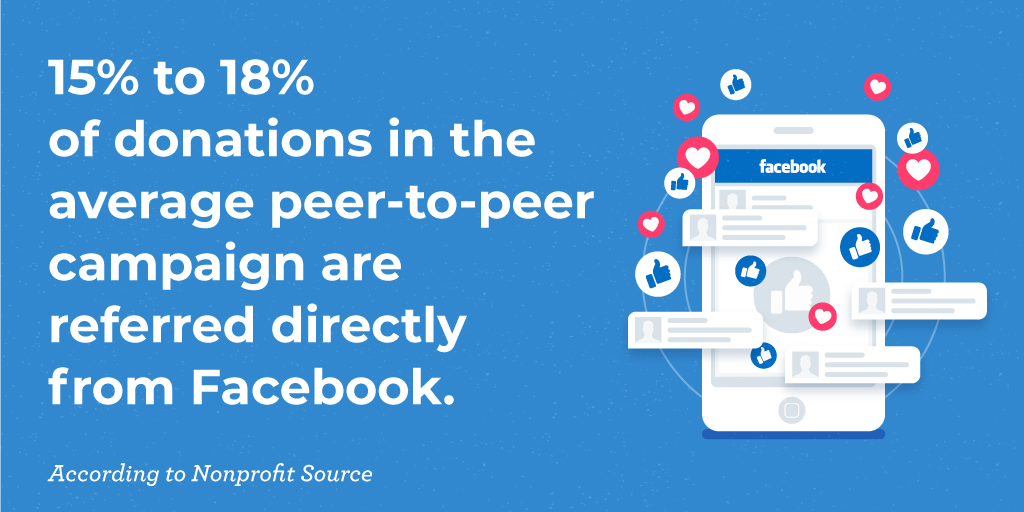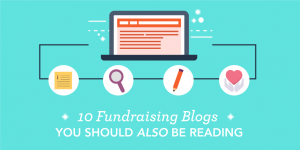We’re not the only ones who have called millennials the activist generation. In fact, an article in Forbes claimed that millennials will become the most generous generation in history. It’s known that people become more generous with age, and 84 percent of millennials already give to charity. As they pay off student loans, become more financially stable, and make up more of the workforce, charitable millennials could change the face of philanthropy all together.
Nonprofits and fundraisers who want to set themselves up for success down the road should focus on this demographic now. Millennials prefer to give because of the causes that are important to them. Aligning your nonprofit’s messaging with a mission-centric approach is crucial.
But many nonprofits are unsure how to get those relationships started. We’ve covered the power of monthly giving and the importance of thoughtful stewardship already. But here’s three more ways to connect and build relationships with your most valuable supporters of the future.
1. Crowdfunding
Millennial donors are different than those who came before them in almost every way. Your strategy to acquire charitable millennials should align with the ways they prefer to give. So, suppress your youngest donors from your acquisition mailing when you’re segmenting and targeting your audience.
Instead, use a crowdfunding initiative to get their foot in the door. We know many millennials don’t have much to give right now. But that doesn’t mean they won’t jump at the opportunity to give $5 or $10 to a cause that is important to them!
If you haven’t already, create a GoFundMe page for your organization’s latest initiative. This is an easy way for millennials to discover and support your cause. You can actually raise a lot of money this way! Donations come in fast for the most successful campaigns and can help smaller nonprofits reach or even exceed their goals.
Take the Bird Garden of Naples, Florida as an example. The organization focuses on parrot welfare in captivity and conservation of wild parrots. Their work places parrots that have been abandoned, abused, or are in need of a home into safe custody. The organization raised $22,634 from 1,599 donors in less than two months through their crowdfunding initiative on GoFundMe. That’s an average gift size of just $14.15! Those donations add up quick and open the door for future gifts from a new base of passionate supporters.

2. Peer-to-Peer and Social Media
Peer-to-peer giving and social sharing are often used to support crowdfunding campaigns. Let’s continue to use the Bird Garden as an example. Imagine you are a 20-something and came across the organization’s GoFundMe page.
Maybe you grew up with a bird as a pet and have a soft spot for them. Or maybe you recently watched a documentary about exotic pets and the harsh conditions they can be subjected to. Or maybe you just saw a cute video of parrots playing on social media that ignited the spark. Whatever the reason, the Bird Garden’s mission really spoke to you. You only have $10 to give right now. But as a charitable millennial, you really wish you could make a bigger impact.
Behold, the power of peer-to-peer giving! GoFundMe will automatically prompt you to share your donation on social media. You can also talk to your IT administrator and set this function up on your own site’s donation confirmation page.
Click. Done.
However, a word of warning when it comes to Facebook fundraising. Any data collected through these means is owned by Facebook, not the organization. So, you won’t get full details of who made the donation for follow ups. This strategy is focused on raising awareness and encouraging donors to engage with your organization again on their own.
Never underestimate the true value behind one small gift. It doesn’t take long for that one donation to inspire five, 10, or 50 other people to give. But a strong, mission-driven message and effective stewardship are key to turning small donors into strong advocates for your mission and organization.

3. Micro Donations
We’ve talked at length about the power of those $5 or $10 small gifts millennials love to make. But what about even smaller gifts? Could there really be power in just a few cents? The answer is yes!
We know millennials are all about getting what they want and getting it right away. So, it’s no wonder services like Grubhub are so prominent among this demographic.
So why is this important? Grubhub is taking steps to encourage their users to give back through their Donate the Change program and their partnership with No Kid Hungry. Upon checkout, users are asked if they would like to round up their total to the nearest even dollar amount and donate their change to help feed hungry children in need.
While their food that is on its way to their door, the user is reminded that many will go without a meal today. When donating just a few cents can make an impact and seems like a no-brainer. Especially when you are already paying a little extra for the convenience of the delivery service!
While the organization itself cannot collect information from their new micro donors this way, it is a great way to raise awareness for a cause. I’ll admit it, the first time I was prompted to donate the change with Grubhub, I was intrigued. So, I went to their website to learn more about the initiative and how such a small amount of my money could make such a big impact.
When people are moved by this kind of initiative, they want to learn more. they’ve also already been hit by that feel-good sensation of making a difference in the world. Nonprofits can use these powerful primers to encourage further engagement from charitable millennials. Once these micro donors are on their site, nonprofits can focus on messaging and their mission and generate new leads.
Your nonprofit can launch micro-giving campaigns of your own by building partnerships with local community organizations. What if a local nonprofit got every pizzeria in town to promote a “Keep the Change” donation? This creates revenue and builds the local bonds of the community, all while supporting the organization’s goals.
Your Next Generation of Donors
Today’s world is more connected than ever. Millennials catch a lot of heat for being glued to their smartphones. But not all that time is spent posting selfies on Instagram or tweaking fantasy sports lineups! It’s important to reach people where they feel comfortable, no matter what segment of your donor base we’re talking about.
And right now, were talking about the generation that grew up as smartphones became prominent. They’ve had the world’s knowledge at their fingertips as long as they can remember and grew up with social media. It’s easier than ever to learn about different issues effecting the world and to discuss those concerns with like-minded individuals.
So, it’s no wonder millennials feel so inspired to create change in the world! They have much more information available to them than the generations that came before. They also have the tools to raise awareness and grow support for the causes that are most important to them. The access to information and the ease of sharing it has made it easier for everyone to help make a difference.
Many charitable millennials realize this and feel obligated to help change the world for the better. Doesn’t that sound like a donor you would want to have supporting your organization for years to come?







